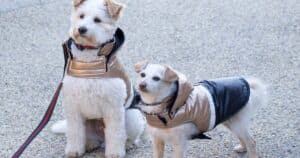
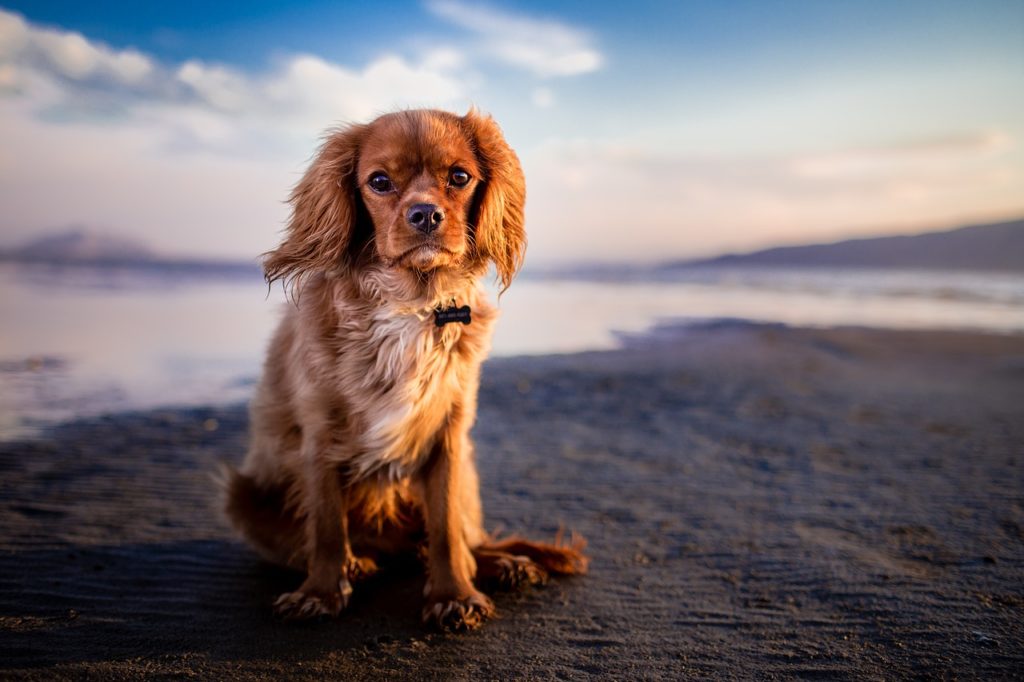
No matter what of breed of dog you own, regular grooming helps to keep their skin healthy and provides the coat with a protective barrier. It also helps to keep their hair free of matts which can be painful and cause infection. To help, we’ve compiled our top grooming tips for dogs of all breeds to keep them healthy from head to paw.
It is worth noting that washing your dog when it is dirty is not always the right thing to do. This may sound like strange advice, but if you have a dog with longer hair or a double coat and are not regularly brushing your dog or keeping up with regular professional grooms, their hair may be matted underneath. If this is the case and you wash them, you are going to make the matts much worse. This causes discomfort and pain to your dog’s skin and also dramatically increases the risk of bacteria and infection underneath.
If you are doing the right thing by your dog with regular brushing and professional grooms, then a bath at home in between when they are dirty can help. However, it is important to know how often it is recommended to wash or groom your dog if it is a certain breed or hair type, as as over-washing your dog can rob its skin and coat of essential oils that help protect it.
Not all dogs like water, so it is important not to force your dog into the bath or shower or you will reinforce its fear. It is best to start getting it used to having a bath as early as possible when your dog is a puppy and making it a fun and positive experience. However, if you have an older or rescue dog that doesn’t like having a bath, then you need to go back to basics and start by slowly reintroducing them to water again in a positive environment. Be careful not to reinforce their anxiety through your own behaviour. Find out how you may be unknowingly doing this here.
Having someone else to assist with holding a wriggling pooch or puppy may help, as may providing treats when they remain calm and starting very slowly one paw at a time. You might just run their paws under water whilst treating calm behaviour one day, then slowly, bit by bit, introduce more of their body over a week. It might seem silly, but a little bit of patience at the start can help make life much easier and happier for you both in the long term.
It’s also important to talk to your groomer to get their tips and ensure they are aware your dog has a phobia so that they can keep this in mind as well. Here’s some puppy grooming tips that might help with both a puppy and an older anxious dog.
ALWAYS use pet shampoo and conditioner, never be tempted to use your shampoo or soap, as a dog’s PH levels are very different to our own and could cause skin irritations or sensitivities.
You will also need to find a shampoo and conditioner that works best for your individual dog depending on their skin, coat or any allergies they may have. Just like I do for myself, I always use a 100% natural shampoo for dogs on Darcy to reduce any exposure to harmful and toxic chemicals.
Regular brushing at home is vital to help keep your dog clean, prevent matting, increase circulation and reduce shedding.
The amount of brushing your dog requires will depend on the length and type of coat. The rule of thumb is once a week, then an extra brush per week for every centimetre of hair length, e.g.: if your dog has hair that is 3cm long then you should be brushing it 3 times a week at home.
If they have a double coat this also means using a de-shedding brush or rake to remove the undercoat to help keep them cool in summer and avoid matts in the winter.
Dogs with medium to long hair and dogs with curly hair need a regular visit to a professional groomer. Particularly breeds like Poodles, Poodle crosses, Huskies , Bichone Frise, Maltese, Pomeranians and similar, given they have quite specific hair grooming needs.
Even if you are following our grooming tips for dogs here, a visit to a professional groomer from time to time can help keep a check on your dog’s health as well.
Regular trimming and cleaning of your dog’s fringe and hair around its eyes is important. The hair near the eyes can collect a lot of dust and dirt and, if it’s not cleaned regularly, it can block the tear ducts and cause infection.
It is also important to remove any ‘gunk’ from around their eyes which can be as basic as using a damp cloth to gently clean the eye area. If your dog is prone to tear stains, check out our video and article about why and how to fix it here.
Checking your dog’s ears from time to time is very important. Some breeds are prone to getting ear infections so it’s worthwhile knowing the symptoms of this. Symptoms can include scratching and rubbing at the ear(s) and head shaking.
Ear infections can be very painful (just like they are for humans), so take your dog to the vet if you see your dog displaying any of the symptoms above for longer than a day.
Maintaining good dental hygiene for your dog may seem straightforward. However, very few owners actually do what is required to look after their dog’s dental health properly which leads to gum disease and other wider health issues including heart and other problems.
The most important thing is to clean their teeth daily with a dog toothpaste and finger brush. I use a baby’s tooth brush on Darcy. It takes time and patience, like anything, but it is THE most important way to keep their teeth clean in between professional teeth cleans.
A dental check up at the vets should be done every 12 months, with the daily brushing and other tools to help including feeding a dental specific dog food, natural dental sticks, raw bones and dental chew toys. To learn more about why it is so important to keep your dog’s teeth clean, read here.
Our dog’s nails can trim themselves naturally if they are a larger dog and are walked on paved surfaces regularly. However, with dogs roaming less than they used to in the wild, this doesn’t seem to be enough to keep them at a healthy length for many dogs these days so a regular trim is vital.
If you do notice they’re a little sharp, or are touching the ground when your dog has it’s paw flat on the ground, head to the vet or groomer for a quick trim as this can create discomfort and even pain for your dog if they grow too long.
It is possible to learn how to do it yourself, but you need to be careful not to cut the nerve, known as the ‘quick’ in your dog’s nails or it will cause them pain and a lot of blood. It can be a bit easier to learn with dogs that have clear nails, as you can see where the nerve ends. Darker nails can be tough, so you really should take your dog to your groomer or vet if you aren’t sure. If you are confident enough to give it a try, then here’s some tips to help.
About the Author: Lara Shannon is co-Host of Pooches at Play and has completed a Certificate III in Dog Behaviour & Training with the National Dog Trainers Federation. Lara also runs her own dog training and minding business in Melbourne’s Bayside area.

Winter safety for dogs – Top Tips
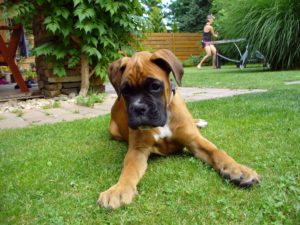

The importance of regular dog grooming
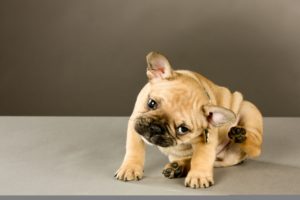
Treating skin allergies in dogs
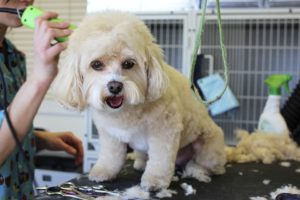
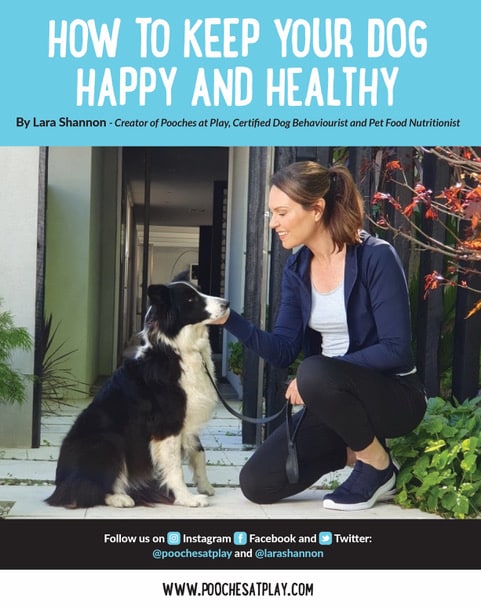
Receive a FREE copy of the E-Book “How to Keep your Dog Happy & Healthy”


Get your paws on Lara Shannon’s best selling books ‘Eat, Play, Love (your dog) and World of Dogs.
Available in Australia, USA, UK and Canada.